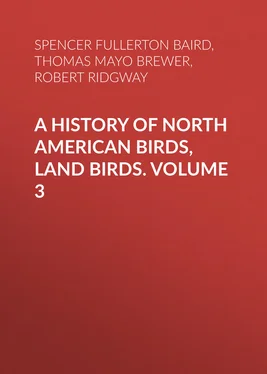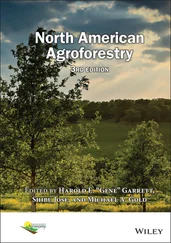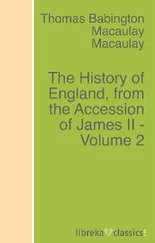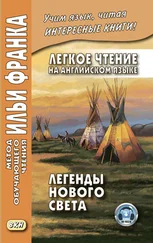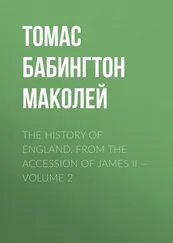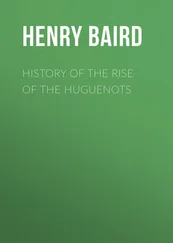Spencer Fullerton Baird - A History of North American Birds, Land Birds. Volume 3
Здесь есть возможность читать онлайн «Spencer Fullerton Baird - A History of North American Birds, Land Birds. Volume 3» — ознакомительный отрывок электронной книги совершенно бесплатно, а после прочтения отрывка купить полную версию. В некоторых случаях можно слушать аудио, скачать через торрент в формате fb2 и присутствует краткое содержание. Жанр: foreign_antique, Биология, foreign_edu, на английском языке. Описание произведения, (предисловие) а так же отзывы посетителей доступны на портале библиотеки ЛибКат.
- Название:A History of North American Birds, Land Birds. Volume 3
- Автор:
- Жанр:
- Год:неизвестен
- ISBN:нет данных
- Рейтинг книги:5 / 5. Голосов: 1
-
Избранное:Добавить в избранное
- Отзывы:
-
Ваша оценка:
- 100
- 1
- 2
- 3
- 4
- 5
A History of North American Birds, Land Birds. Volume 3: краткое содержание, описание и аннотация
Предлагаем к чтению аннотацию, описание, краткое содержание или предисловие (зависит от того, что написал сам автор книги «A History of North American Birds, Land Birds. Volume 3»). Если вы не нашли необходимую информацию о книге — напишите в комментариях, мы постараемся отыскать её.
A History of North American Birds, Land Birds. Volume 3 — читать онлайн ознакомительный отрывок
Ниже представлен текст книги, разбитый по страницам. Система сохранения места последней прочитанной страницы, позволяет с удобством читать онлайн бесплатно книгу «A History of North American Birds, Land Birds. Volume 3», без необходимости каждый раз заново искать на чём Вы остановились. Поставьте закладку, и сможете в любой момент перейти на страницу, на которой закончили чтение.
Интервал:
Закладка:
2
By Thomas H. Huxley, F. R. S., V. P. Z. S.; Proceedings of the Zoölogical Society of London, 1867, pp. 415–473.
3
By Charles Ludwig Nitzsch. English edition, translated from the German by Dr. Philip Lutley Sclater, and published by the Ray Society of London, 1867.
4
By William McGillivray, A. M.; London, 1840.
5
See Jardine’s Contributions to Ornithology, London, 1849, p. 68; 1850, p. 51; 1851, p. 119; 1852, p. 103; and Transactions of the Zoölogical Society of London, 1862, p. 201.
6
Hand List of Genera and Species of Birds, distinguishing those contained in the British Museum. By George Robert Gray, F. R. S., etc. Part I. Accipitres , Fisserostres , Tenuirostres , and Dentirostres . London, 1869.
7
I have, however, examined the sterna only of Nyctea , Bubo , Otus , Brachyotus , Syrnium , Nyctale , and Glaucidium .
8
My unpublished determinations of the North American species were furnished, by request, to Dr. Coues, for introduction into his “Key of North American Birds”; consequently the names used in these pages are essentially the same as those there employed.
9
This case of the restriction of the American representative of a European or Western Palæarctic species to the western half of the continent has parallel instances among other birds. The American form of Falcolanarius (var. polyagrus ), of Corvus corax (var. carnivorus ), Pica caudata (var. hudsonica and var. nuttalli ) and of Ægialitis cantianus (var. nivosus ), are either entirely restricted to the western portion, or else are much more abundant there than in the east. The European genera Cinclus , Coccothraustes , Nucifraga , and Columba have representatives only in the western portion of North America.
Instances of a similar relation between the plants of the Western Province of North America and those of Europe, and more striking likeness between the flora of the Eastern Region and that of Eastern Asia, are beautifully explained in Professor Gray’s interesting and instructive paper entitled “Sequoia, and its History,” an address delivered at the meeting of the American Association for the Advancement of Science, at Dubuque, Iowa, August, 1872. The poverty in the species of tortoises, and richness in lizards, and the peculiarities of the ichthyological fauna, as well as absence of forms of Western North America and Europe, compared with Eastern North America and Eastern Asia, afford other examples of parallelism in other classes of the Animal Kingdom.
10
See Baird, Am. Journ. Arts and Sciences, Vol. XLI, Jan. and March, 1866; Allen, Bull. Mus. Comp. Zoöl. Cambridge, Vol. II, No. 3; and Ridgway, Am. Journ. Arts and Sciences, Vols. IV and V, Dec., 1872, and Jan., 1873.
11
For diagnoses of these geographical races of Strix flammea , see pp. 1339 and 1340.
12
See Allen, Bull. Mus. Comp. Zoöl., Cambridge, Vol. II, No. 3, pp. 338, 339, where these plumages are discussed at length.
13
Strix flammea , var. flammea . Strix flammea , Linn. S. N. I, 133, 1766, et Auct.-Strickl. Orn. Syn. I, 1855, 178. Strix alba , Scop. Ann. 1st, p. 21, 1768.—Gmel. S. N. 293.—Lath.—Daud.—Lep. and Shaw. Strix guttata , Brehm, Vög. Deutschl. p. 106, 1831. Hab. Europe and Africa.
14
Strix flammea , var. guatemalæ , Ridgway. Central American specimens differ very appreciably from Mexican and North American examples, in being considerably darker-colored in the extreme phases of plumage. Eight of eleven specimens convey an impression of decided difference in this respect at a mere casual glance. The extremes of plumage in this series are as follows:—Darkest (No. 40,961, Chimandega, Nicaragua; F. Hicks): The dusky mottling of the upper parts is altogether darker than in any example from Mexico or northward, and prevails, with great uniformity, over the entire surface; the white specks are linear, instead of roundish. On the primaries and tail, the blackish and ochraceous are about equal in extent, the latter color forming five bands on the quills, and four on the tail. The facial circle is bright dark orange above the ears, and the portion below the ears continuous black; the face is reddish-white, strongly tinged with wine-brown, while the spot in front of the eye is deep black. The whole lower parts are deep orange-ochraceous, with numerous irregular specks of dusky, which posteriorly become broken or confused into ragged zigzag transverse mottlings, while on the lower tail-coverts they form irregular transverse bars. Wing-formula, 2, 1–3. Wing, 13.00; tail, 5.90; culmen, .85; tarsus, 2.90; middle toe, 1.50. Lightest (No. 41,252, ♂, San José, Costa Rica, Aug. 23, 1865; José C. Zeledon): The dark tint above, though prevalent, is a continuous wash of grayish, instead of a fine mottling of blackish and white; the white specks are nearly obsolete. The wings are superficially plain grayish, this overlaying the ground-color of ochraceous-orange; and have visible spots only on the primaries, near their shafts. The tail has four rather distinct grayish bands. The facial circle is ochraceous, somewhat darker across the foreneck; the face white, with the ante-orbital spot claret-brown. Entire lower parts immaculate pure white. Wing-formula, 2, 1=3. Wing, 12.30; tail, 5.30; culmen, .70; tarsus, 2.75; middle toe, 1.45.
No. 24,283, Nicaragua, (Captain J. M. Dow,) is like the specimen just described, in the uniform dark wash of the upper parts, but this is deeper; the lower parts, however, are quite different, being ochraceous-orange, instead of pure white.
The remaining five specimens (from San Salvador, Costa Rica, and Nicaragua) are alike, and differ from northern birds in the deeper dark mottling of the upper parts; the white specks very conspicuous, and usually sagittate. The facial circle deep black where it crosses the foreneck. The lower parts vary in color from nearly pure white to deep orange-rufous; the dark markings of the lower surface are larger, more angular, and more transverse than in true pratincola . The wing measures 11.30–13.00; tarsus, 2.55–2.95. The northern form varies from 12.50–13.00 (wing) and 2.50–2.85 (tarsus). It is thus seen that while these southern birds average smaller in general dimensions, they have actually larger feet, the average length of the tarsus being 2.80 in the Central American series, and only 2.60 in the northern series. This exactly coincides with the case of Sturnella , the S. magna var. mexicana of the same region being smaller bodied and shorter winged than var. magna of the United States, but with much larger feet, see p.
15
Strix flammea , var. perlata . Strix perlata , Licht. Verz. Doubl. 59, 1823.—Tschudi, Av. Consp. Wiegm. Archiv. 267, 1844.—Hartt. Syst. Ind. Azara. p. 3.—Max. Beitr. III, 263 (excl. syn.).—Strickl. Orn. Syn. I, 1855, 180 (excl. syn.). Strix flammea , Darwin, Zool. Beag. 34.—Schomb. Verz. Faun. Brit. Guian. p. 732.—Spix, Av. Bras. I, 21.
This is a still further differentiated or more appreciably modified race. It differs in smaller size (wing, 11.70–12.50; tail, 4.80–5.20; tarsus, 2.40–2.75) and more square tail, while the colors also present constant differences. The tail is much lighter compared with the wings, the bands narrower and more sharply defined, though the same in number.
Читать дальшеИнтервал:
Закладка:
Похожие книги на «A History of North American Birds, Land Birds. Volume 3»
Представляем Вашему вниманию похожие книги на «A History of North American Birds, Land Birds. Volume 3» списком для выбора. Мы отобрали схожую по названию и смыслу литературу в надежде предоставить читателям больше вариантов отыскать новые, интересные, ещё непрочитанные произведения.
Обсуждение, отзывы о книге «A History of North American Birds, Land Birds. Volume 3» и просто собственные мнения читателей. Оставьте ваши комментарии, напишите, что Вы думаете о произведении, его смысле или главных героях. Укажите что конкретно понравилось, а что нет, и почему Вы так считаете.
